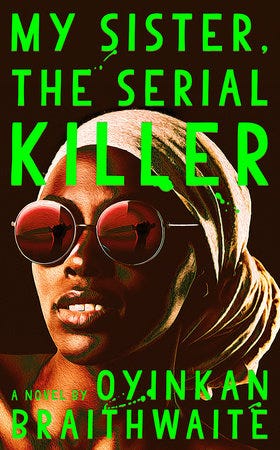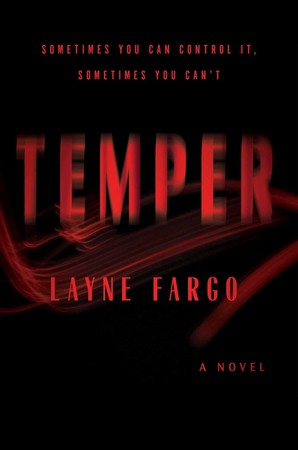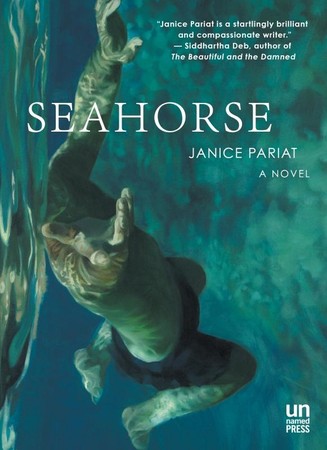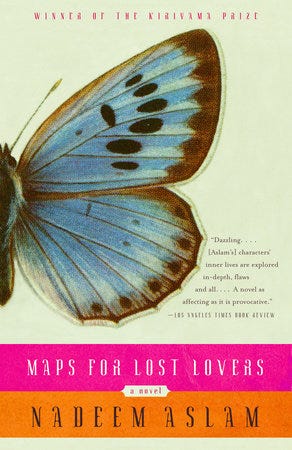Reading Lists
7 Novels About Love Triangles
Rheea Mukherjee, author of “The Body Myth,” recommends contemporary fiction about conflicted love

Electric Lit is just $4,000 away from our year-end fundraising goal of $35,000! We need to hit this target to get us through the rest of 2025, and balance the budget for 2026. Please give today! DONATE NOW.
It’s ubiquitous, this love thing. It’s the fundamental emotion writers employ to illuminate our human condition. But here’s the deal: love is otiose without conflict. In fact, love can only be defined by it. Without conflict, love is reduced to a passive state of being.
“So Bob met Sonia in 2005, they fell right in love, boy did they. Then they got married, had a kid. Now they throw dinner parties every second Saturday of the month.”
Yeah, scintillating, eh?
Love is a power tool for us writers. It layers plot, demands emotional investment, and allows readers to be triggered by their own memories. Love is always defined by the drama. The loss. The risk. The impossibility and even the inevitability.
I had only one prayer in my writerly soul when I started writing The Body Myth. I wanted to attempt to give my readers that inexplicable experience I had when I’d read books and watched movies that held me captive to love. All kinds of love: Fluid love. Stupid love. Hopeful love. Unsanctioned love. Unholy love. Love-for-the-sake-of-suffering love. Psycho love.
I also wanted to embrace a new kind of Indian story. One that was relevant to the life I lived. I wanted to keep the buzz of modern urban India alive, acknowledge it unabashedly, but bring an insularity that could potentially make the setting irrelevant. This aim was established only because I had felt great joy in reading books that could have me invested in every moment of the plot while also allowing me to imagine and learn about places far away from my lived experiences. In my novel, Mira, a young widow and teacher in urban India, falls in love with a chronically ill woman, and her husband simultaneously in very different ways. It’s a very modern iteration of the love triangle, one defined through multiple conflicts: from pushing social boundaries to questioning psychological wellness. Mira facilitates conflict in new ways as she gets closer to the root of her obsession with them, to understand what love means to her.
And that’s the beauty of this theme, the love triangle, or rather the conflict that defines love. It’s a melody that you can find in a million tunes and that can be produced in as many unexpected ways. I bring you seven books that offer up the classic “love triangle” in some of those lesser expected ways.
My Sister, the Serial Killer by Oyinkan Braithwaite
This slim novel will kidnap you for the better part of a weekend. Set in current day urban Nigeria, the book introduces Korede, a young nurse who “should have” been married and “settled” by now. But then there’s Korade’s younger sister Ayoola who is mythically beautiful, irresponsible, self-indulgent, and possibly a boyfriend killer on the regular. Korade is guilty of being an enabler. She cleans up her sister’s messes which are literally bloody and battles her own sense of inadequacy, often repressing her own needs so that Ayoola can be Ayoola. The love triangle here? There is a doctor who Korade works with everyday, Korade secretly fantasizing about a happily-ever-after with him. But the doctor soon falls for Ayoola. Does Korade love him enough to keep him alive? And what about the bond of blood? This book is semi-satire, semi-thriller, and altogether genre-bending.
Temper by Layne Fargo
Temper is set in Chicago where we get a peek into the city’s theatre scene. Kira has just been offered the role of a lifetime. The bad news is that it means working with the intense and mercurial director Malcolm. There is an added complication for Kira. She has to work with Joanna, the co-founder of the theatre company, who has a bruised ego and a possessive streak when it comes to Malcolm. Joanna has been in unrequited love with Mal for years, and he’s taken advantage of it by manipulating her into doing all the work at their theater company. As rehearsals progress, Kira and Mal develop a thick sexual tension, but Kira hates herself for it. Mal essentially “triangulates” Kira and Joanna against each other, keeping them at odds so they don’t catch on to all the awful things he’s doing. This book keeps feminism central to the plot and promises evil twists as both these women embrace their ambition and individual path.
Dept. of Speculation by Jenny Offill
This one was was quite the rage when it was first published a few years ago. I only read it in late 2018 and was compelled by its narrative play: a literal documentation of a long-term marriage via letters between the wife and husband. The author seamlessly brought in historical and literary references that dovetailed beautifully with the static domesticity and loneliness that only a long-term relationship can birth. From the first rush of love to motherhood and trying to find firm identity, this novel’s triangle is offered as the inevitability of life. The loss we gain from time.
Seahorse by Janice Pariat
Seahorse was spectacular for me because it managed to create a mythical aura around a very urban context. The book features New Delhi where Nem, a student, falls in love with his professor from London, Nicholas. The professor abruptly leaves back to London leaving Nem crushed and confused. Years later, Nem is an art critic in New Delhi and finds a work opportunity to get himself to London. That’s when he starts to trace his first love Nicholas, who does a good job avoiding him. The narrative then steers us to Myra, Nicholas’s former lover who seems to have mysterious answers that can possibly give closure to Nem. The odd friendship struck between Nem and Myra eventually sparks a flame, despite (or perhaps because of) the specter of Nicholas in both their lives. This layered book has a dreamy quality, one that will make you question the authenticity of your own memory and what it has to do with reality.
A Child’s Story About a Love Triangle
Neon Noon by Tanuj Solanki
Neon Noon won’t have been heard of in the West, but Solanki has been doing some incredible work in English fiction in India. His first novel is inventive, sharp, and allows you empathize with the giant amounts of self-loathing the main character of this book exhibits. Ann Marie is the French ex-girlfriend who has left the protagonist in shambles, alone in his Mumbai flat. In an attempt to rid himself of the painful memories, he goes to Pattaya, Thailand, and in this tourist hotspot, he finds Noon, a sex worker who befriends him. While the indulgences of a broken-hearted man might seem like a trope, this book is raw and unabashed in its telling. A reminder of the stark emptiness that resides in the pockets of overcrowded cities.
The Museum of Innocence by Orhan Pamuk
This is my favorite of the novels by Pamuk. A novel that reminds me I was once a more patient reader, one who was able to read longer books and enjoy powerful but at times meandering prose. The Museum of Innocence follows Kemel in Istanbul in the 70s. He’s engaged to be married but has recently met Fusun, who happens to be a distant relative of his. They both fall in love in only that melancholic, beautiful way you do when you know you can’t really have it. It’s the secrecy that fuels this love and although Kemal marries his fiancée, he and Fusun continue to be in contact. Separations come, but Kemal is reunited a year later with a now married Fusun. Kemal looks back on the decade of their relationship, as the happiest time of his life, one that he could not fully appreciate at the time. His love is reborn in the form of an obsessive behavior: collecting and documenting places and things that held memory to their love.
Maps for Lost Lovers by Nadeem Aslam
I was asking a couple friends for their recommendations on love and conflict, when one of my most reliable bookworms told me about Maps for Lost Lovers. When I looked it up, it got me thinking about race and culture playing the role of conflict in love. The novel focuses on Pakistani immigrants in a lonely English town. Two lovers (Jugnu and Chanda) have been killed by Jugnu’s brothers for the sin of living together. The third corner of this triangle is especially sharp: it defines the cultural boundaries of love in a country that stays cold and foreign to its characters, despite the passage of time. The Guardian described it as being “filled with stories of cruelty, injustice, bigotry and ignorance, love never steps out of the picture — it gleams at the edges of even the deepest wounds. Perhaps this is why the novel never gets weighed down by all the sorrows it carries: there is such shimmering joy within it, too. Here are characters hemmed in on one side by racism and on the other side by religious obscurantism, and yet they each carry remarkable possibilities within them.”
















